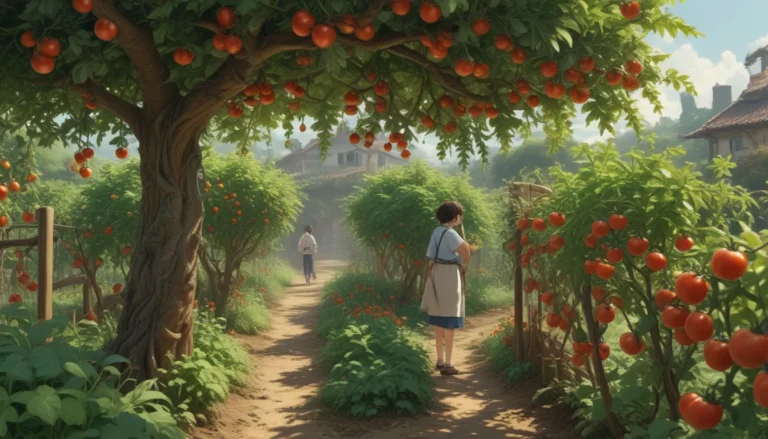Planting Spring-Flowering Bulbs: A Comprehensive Guide

Are you eagerly anticipating the arrival of spring and the colorful blooms that come along with it? If so, planting spring-flowering bulbs is a must. From daffodils to tulips, these bulbs are a surefire way to add beauty and charm to your garden. But the big question remains – when should you plant these bulbs for optimal results?
Let’s delve into the world of spring-flowering bulbs and explore the best practices for planting them. From understanding what bulbs are to determining the ideal planting time, we’ve got you covered with all the information you need to create a stunning spring garden.
What You’ll Learn
- What Is a Bulb?
- When to Plant
- The Importance of Chilling
What Is a Bulb?
Before we jump into planting guidelines, let’s discuss what exactly constitutes a bulb. A bulb is a type of geophyte, a plant propagated through an underground storage vessel that contains all the necessary components for growth and flowering.
Inside a bulb, you’ll find a growing bud and leaves, while the outside is adorned with roots and a protective tunic. True bulbs are often referred to as “tunicate” due to the presence of this scaly brown wrapper.
While we commonly associate bulbs with plants like daffodils and tulips, the term also encompasses other fleshy-rooted plants such as corms, rhizomes, tubers, and tuberous roots. Despite their varying appearances and growth habits, these underground storage units all lead to the stunning spring blooms we adore.
Whether it’s a corm like the crocus, a corm/tuber like the caladium, or a rhizome like the iris, as long as it flowers in the spring and grows from one of these storage units, it falls under the category of spring-flowering bulbs.
When to Plant
Figuring out the best time to plant spring-flowering bulbs is crucial for their successful growth and blooming. Most bulb vendors offer these plants in the fall, aligning perfectly with the planting season.
While it may be tempting to pop the bulbs into the ground right away, there are some key guidelines to follow to ensure optimal results. According to “Rodale’s Ultimate Encyclopedia of Organic Gardening,” planting should occur when soil temperatures are below 60°F at a depth of six inches.
If you don’t have a thermometer handy, you can also use nighttime temperatures as a guide. When the nightly temperatures consistently dip into the 50s or below for two weeks, it’s a sign that the timing is right for planting.
Additionally, bulbs require four to six weeks to grow roots before the first frost hits. Knowing the average first frost date for your region can help you pinpoint the best time to plant your bulbs. Websites like the National Gardening Association’s guide to frost dates can provide valuable insights based on your location.
But what if you miss the optimal planting window and find yourself in the middle of winter with unplanted bulbs? According to experts at Purdue Consumer Horticulture, if the ground is workable, you can still plant the bulbs. As long as the soil temperature is above 40°F, they will develop roots.
To prevent the bulbs from being affected by freezing and thawing cycles, consider adding a layer of mulch for protection. While late-planted bulbs may bloom later than usual, they should eventually catch up and bloom in the following spring season.
If you’ve completely forgotten about your bulbs and unearth them way past the planting window, don’t fret. You can still salvage them by potting them in a container with potting medium. Store them in the fridge at 40°F for around 13 weeks, then transfer them to a warmer location (65 to 70°F) to encourage blooming within two weeks.
The Importance of Chilling
For spring-flowering bulbs, proper chilling is essential to trigger the flowering process. These bulbs become available for purchase in early fall when the weather conditions favor planting.
By adhering to guidelines such as soil temperature, nighttime air temperature, and frost dates, you can maximize your chances of success. Even if you miss the fall planting window, there are still alternative methods like planting in cooler soil or forcing blooms indoors.
Forgotten bulbs discovered long after their planting time might still have the energy to bloom. As long as they are in good condition, you can pot them up, provide them with artificial chilling, and then transfer them to an appropriate location to encourage flowering.
Ready to Plant Your Bulbs?
Now that you’re equipped with all the essential information on planting spring-flowering bulbs, it’s time to transform your garden into a vibrant oasis of color. Whether you choose to follow traditional planting timelines or experiment with late-blooming techniques, the joy of seeing your bulbs bloom is unparalleled.
To get you started, explore some of our favorite bulb planting resources below:
- When and How to Plant Flower Bulbs After Forcing
- Which Way Up Should You Plant Bulbs?
- How to Check Bulbs for Viability
- 25 of the Best Early Spring Blooming Flowers
With these resources at your disposal, you’ll be well on your way to creating a mesmerizing spring garden that will leave you and your visitors in awe.
*





